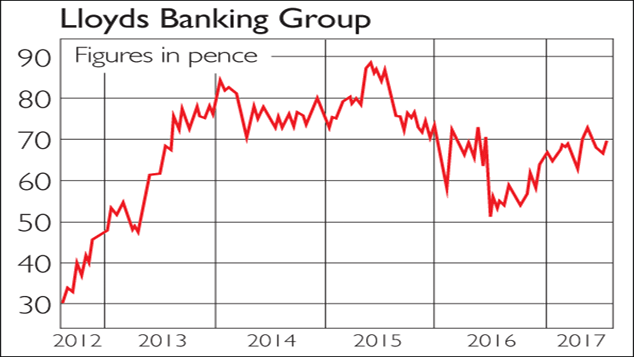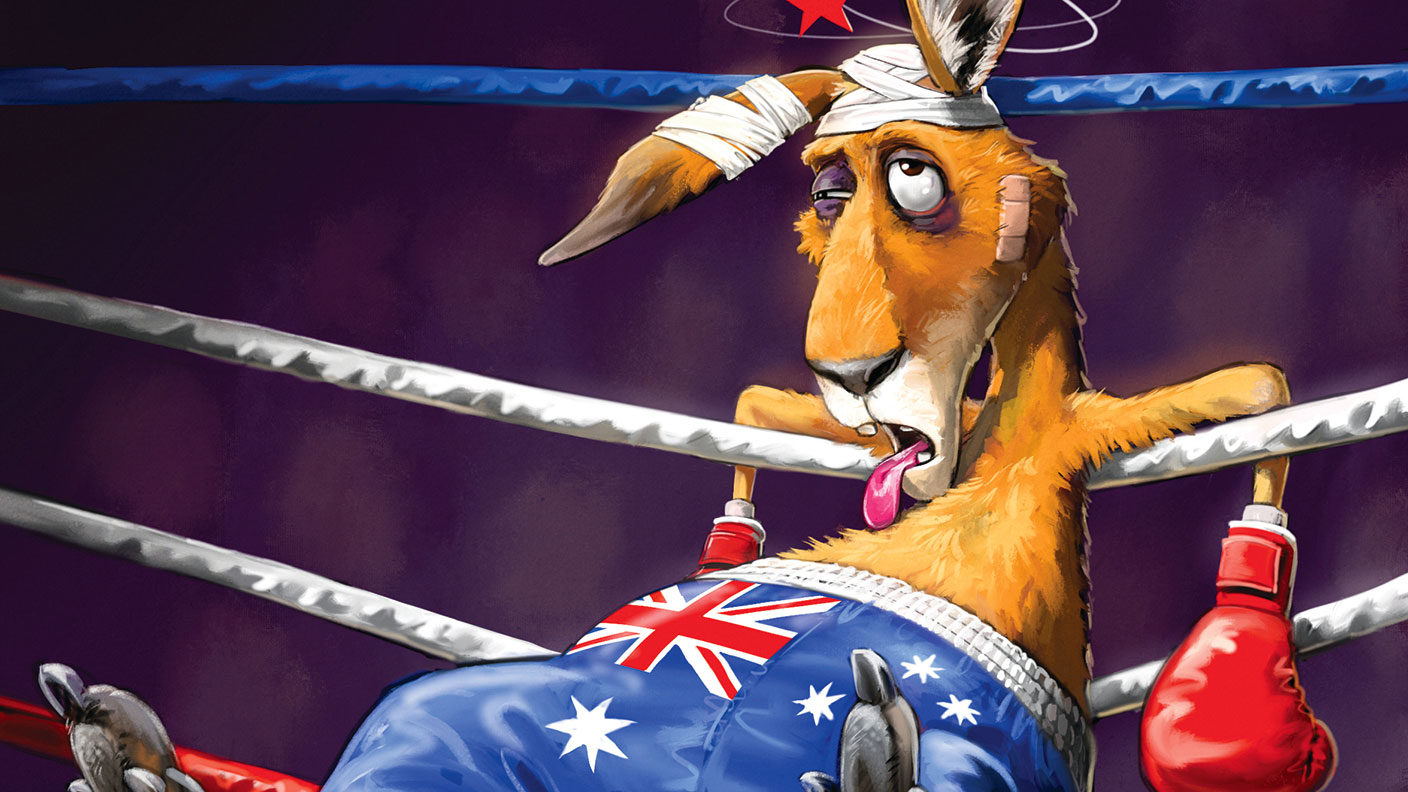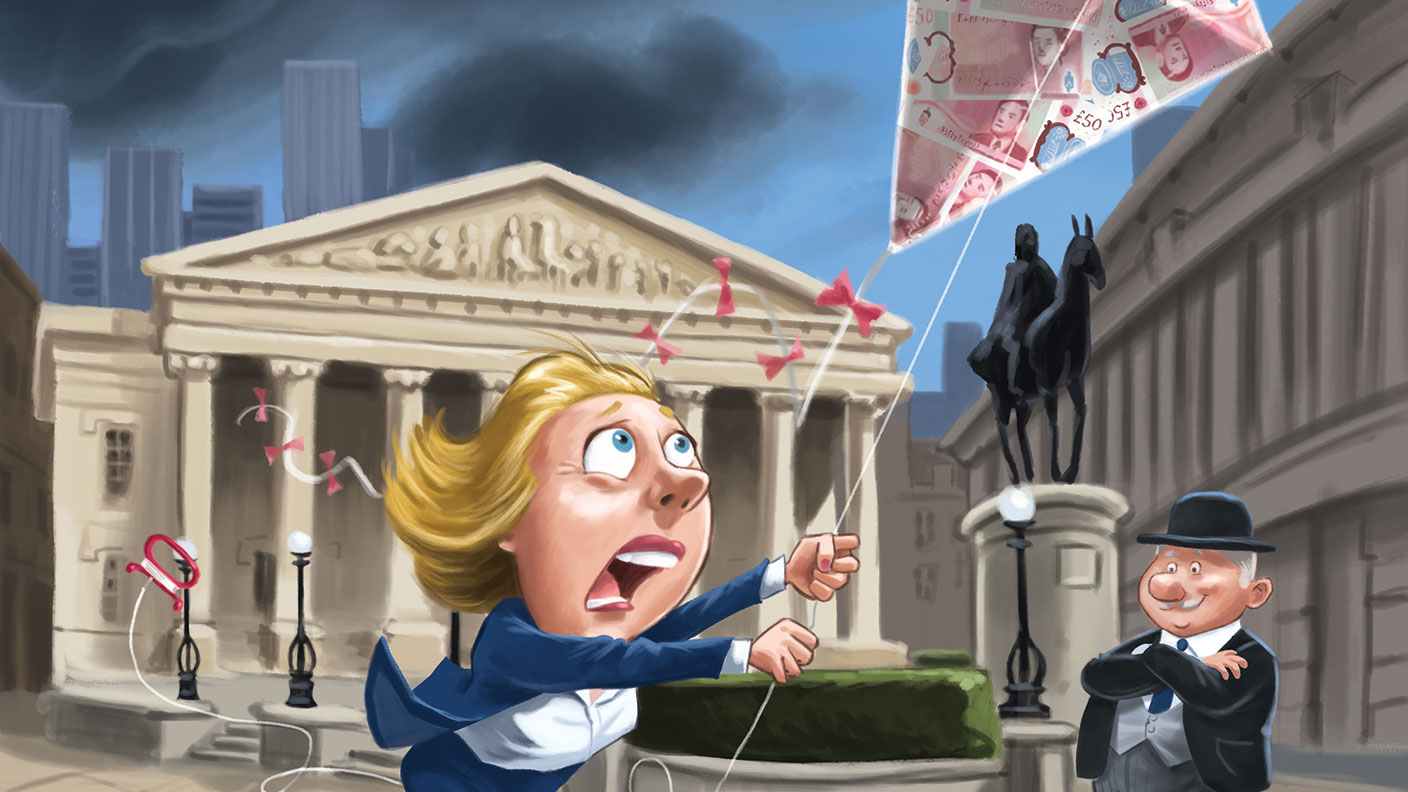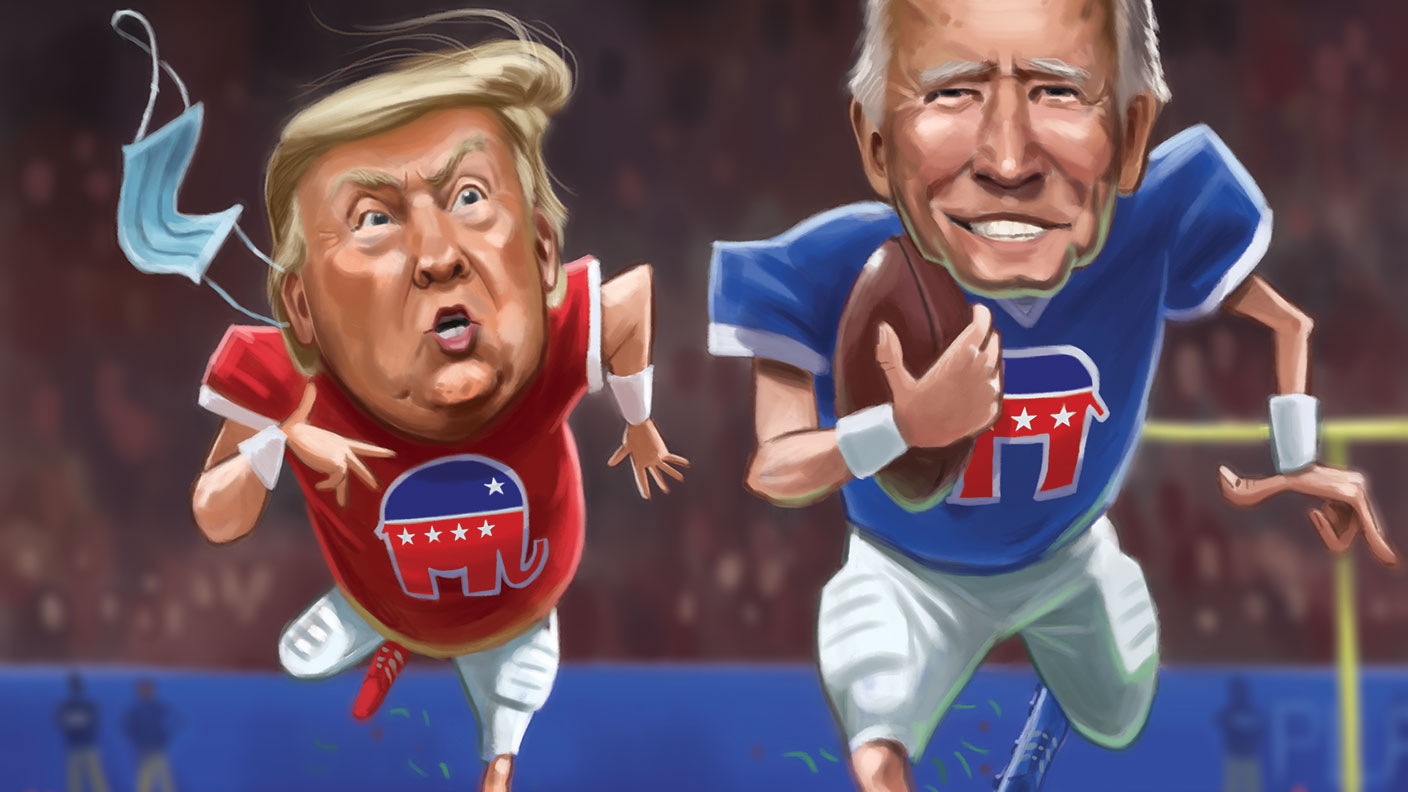Why I’m buying into the big banks again
It’s ten years since bank behaviour triggered a global financial crash. But the bad boys have reformed – it’s time to learn to love them again, says Jonathan Compton.

It's ten years since bank behaviour triggered a global financial crash. But the bad boys have reformed it's time to learn to love them again, says Jonathan Compton.
It won't win me much of a following on social media but I like banks, and I believe that several (particularly in the UK) are cheap, and that their business models are interesting. So I plan to buy more, and I think you should, too. But first, let's remind ourselves of why everyone hates them. This month marks the tenth anniversary of one of the most dramatic periods ever in financial markets the beginning of the first collapse of global banking, which for a while threatened to implode the global economy. For me, it was rather exciting.
For nearly two years prior to the crash, my asset-management firm had stood out from the crowd by shunning banks, because we believed that the financial system was chronically unstable. Although we were not alone in our fears, politicians and central banks were oblivious (this was the era of "light touch" regulation). Our performance suffered at first because banks' share prices were soaring, and the sector was the largest component in most national indices.
MoneyWeek
Subscribe to MoneyWeek today and get your first six magazine issues absolutely FREE

Sign up to Money Morning
Don't miss the latest investment and personal finances news, market analysis, plus money-saving tips with our free twice-daily newsletter
Don't miss the latest investment and personal finances news, market analysis, plus money-saving tips with our free twice-daily newsletter
Come the downturn, however, we were suddenly considered insightful, and I enjoyed my 15 minutes of fame. Yet it was obvious key metrics such as loans-to-deposits or price-to-book ratios were at record high levels, while provisions for bad debts were far too low.
A grim anniversary
In one week in July 2007, three seemingly unrelated announcements pricked the balloon. In America, Bear Stearns announced that two of its hedge funds were bankrupt; in Germany, IBK reported grievous losses and the need to be bailed out; and in the UK, Northern Rock's half-year numbers showed uncontrolled growth in lending, with a balance sheet stretched to breaking point. Yet all three had the same problem excessive property exposure turning sour.
Meanwhile, RBS was doggedly attempting to acquire Dutch giant ABN Amro, a deal recognised as insane even then, while it entered a macho race with other banks to raise their dividends not from higher profits, but by paying out capital or through debt. The writing was on the wall, even though the main collapse took place the following year.
In the UK, institutions controlling more than 60% of all deposits were in effect bankrupt. After various mergers the government had to bail them out. In America, the collapse of Lehman Brothers became the totem for the entire crash, but greater implosions such as AIG, the world's largest insurer, or Fannie Mae and Freddie Mac, which provided funding for nearly two-thirds of all mortgages, were far more threatening. Politicians and central banks froze. It was like a dark comedy.
In the UK, oversight of the financial system had been split three ways (a proven formula for failure) between the Treasury, the Financial Services Authority (FSA) and the Bank of England. Each proceeded to blame the other. The new prime minister, Gordon Brown, and his chancellor, Alistair Darling, went into denial. The head of the FSA, Hector Sants, threatened retribution to those spreading rumours which were true. Bank of England governor Mervyn King mused at length on "moral hazard", as if the collapse were an academic exercise.
At first, other nations viewed these largely Anglo-American problems with schadenfreude, failing to understand the inter-connectedness of global finance. From a tiny Norwegian school fund, which lost everything by betting on US property, to Switzerland's UBS betting on everything, or the three giant Benelux banks, Dexia, Fortis and ABN Amro, the bankruptcies spread. Only in September was real action initiated by the US via its TARP legislation essentially a bailout scheme for any troubled financial institution.
This squeaked through only after the Treasury secretary, Hank Paulson arrogant, ex-Goldman Sachs fell to his knees to beg the Democrat opposition leader for support. So much for Masters of the Universe. With TARP in place, recovery commenced and the rulebooks were torn up.
Sensibly, most depositors were guaranteed by governments, but bizarrely, although shareholders were wiped out, bondholders were repaid in full. It became the New World Order. Losses were to be avoided at all costs. To pay for this, every major country began printing money in vast amounts quantitative easing (QE).
Why buy banks?
Understandably, banks have become the whipping boys of politicians and the public, exacerbated by lottery-sized payoffs for incompetent executives and the absence of prosecution or redress, save for a few minor players. Many jobs, savings and businesses were lost. Worse, it became apparent that banks had continued in their chicanery: they were still price-fixing (the Libor scandals), money-laundering, mis-selling insurance (PPI), or gouging institutional and private clients alike via false foreign-exchange rates, expensive cards and ruinous lending practices. Did any small company or individual ever need "interest-rate hedging products"? Yet they were sold in truckloads.
So why invest in banks? One reason is the failure by politicians to enforce a key promise that no bank would ever again be allowed to grow large enough to threaten state finances. Yet in every developed country, the "too big to fail" banks got even bigger. In the UK, the big three (Lloyds, Barclays and RBS) have around 64% of all current accounts. If you add in Santander on 11% (after buying Abbey National in 2004, then Bradford & Bingley and Alliance & Leicester post-crash), and HSBC on 12%, then the big five have 87% of current accounts an oligopoly.
The same applies globally. There is no evidence these banks are colluding; oligopolies are so profitable that there is no need to. Customers are notoriously lax about switching accounts, and the small differences in rates and charges make it a marginal exercise anyway. Hence governments' "never again" promises have been replaced by complex rules to strengthen bank capital, thus reducing the chances of collapse, and guaranteeing banks should they fail making them more attractive to customers.
The UK government was especially keen to drive competition via new "challenger banks". But look at the mortgage market. There, the big five (same as above, only swap HSBC for Nationwide) have a 67% market share. The largest challenger, Metro Bank, has 0.8%. Together, the challengers have less than 5%. They are also disadvantaged. Because they are smaller, they have tougher capital requirements, and as latecomers into a fading property bull market, they are likely to suffer most in the downturn.
Bank costs will also fall sharply. Press and politicians bemoan branch closures by the end of this year, more than 1,500 will have shut since 2015. Yet the trend will continue. Costly branch networks have been made redundant by the internet for most day-to-day banking. Better still, online banking is a boon to large incumbents with the capital, staff and technology to compete and crush newcomers. But most important is that the huge drag of fines, compensation and legal costs is set to shrink rapidly.
Ratings agency Standard & Poor's estimates that, from 2011 to the end of 2017, the big four banks alone (Barclays, HSBC, Lloyds and RBS) will have paid out £75bn £1,150 for every man, woman and child in the UK, or 9% of these banks' total revenue during that period. The drop in fines will have a dramatic impact on reported profits. This phenomenon is global. Since 2009, global lenders have paid an estimated $350bn in charges. Even if this were to halve over the next seven years, total bank profits would rise by around a third. US banks took the biggest hits first, as the US regulator, the SEC, moved aggressively to clean out the stable which is why US financials have done well over the last four years.
On regulation, there are both positives and negatives. First, the main negative. In 2014, the Financial Conduct Authority's rule book and notes when stacked was allegedly more than six feet high. In 2016, it exceeded 7,000 pages, and, along with related domestic and international regulation, is growing by more than 1,000 pages a year. This is before adding supplements. Any set of rules so large and growing so fast is bound to be contradictory, confusing and make compliance impossible. Nor does the regulator have a sufficient pool of talent to monitor what its rules demand.
The other negative although a positive for shareholders is that regulators globally have been "captured" by the banks, hence the dilution of many of their sensible proposals after the crisis.
Bigger but better behaved
Even so, current regulations represent a big improvement in lending practices, balance sheets, customer terms and controls to prevent banks using client monies to splurge on the fashionable gamble of the day. In short, banks are being curbed from repeating the glaringly obvious pre-crash blunders. Then there is management. As the previous generation of strutting leaders, whose number included ignorant journeymen and psychopathic thugs, have strolled off with their golden farewells, management and boards show many signs of genuine conservatism, responsibility and prudence.
So it is ironic that politicians complain that banks are not lending enough for property (ie, to people who can never repay, the cause of the crash), or more recently that they are tightening up on consumer credit (as they should, given that UK personal savings are at an all-time low).
The best proof of this new prudence is about to be shown by two imminent mini-crises a meltdown among buy-to-let landlords, of whom the majority by number are in practice paying their tenants to live in their houses; and the larger car-financing scandal, breaking now. Inevitably banks will have some exposure but it will be disproportionately small. It is the finance firms, online lenders, and new banks that are likely to be overexposed.
Anger at what the banks did pre- and post-crash is understandable. But it is time for investors to recognise that banking has changed for the better. Boards have been strengthened and improved and much management arrogance and dubious practices have ceased. Many surveys now show banks ranking highly in satisfaction and customer surveys. Without strong banking and credit systems, an economy goes backwards.
Today it is hard to see how UK banks and some in other countries even assuming a sluggish domestic or global economy can fail to boost profits considerably over the next five years. And historically they are very cheap. So that's why I'm in.
The six most promising investments in banking
Despite the improving profits and share prices, banks in some countries are in for a hard time. Australia's are a stand-out given their over-reliance on foreign borrowing and the domestic property market; so too are many Canadian banks; and after a good run, several US financials look fully priced. If you bear that in mind, an easy and cheap way to track financial companies globally is the Lyxor MSCI World Financials ETF (LSE: FING) the biggest potential drag is a 44% US weighting. European financials, meanwhile, are unloved and most funds are underweight, yet an investment in the cheap iShares MSCI Europe Financials ETF (LSE: EUFN) tracker should do well enough over time.

However, I believe that two of the cheapest banks of all are here in the UK. The first is Lloyds Banking Group (LSE: LLOY), the more so as the government has sold the last of its once-45% stake. Lloyds has 25% of all UK current accounts, 22% of retail deposits and 26% of credit-card lending. It has cut 57,000 jobs since 2008 and is about to be a major beneficiary of both declining fines (it had the largest PPI book by far) and further bank closures. It's now a dull and steady bank, trading at below book value, with a forecast yield of over 4%.
There's more bad news to come from Barclays (LSE: BARC), both from possible further fines and a criminal case against the ex-CEO and three others over its 2008 bail-out deal with Qatar. Yet management has changed and it has been slashing non-core operations and cutting absurd global plans made under past boss Bob Diamond. In 2018, earnings per share of 22p are expected, giving a price/earnings ratio of just 9.3, with the dividend doubling to 6p for a 2.9% yield.
Just across the water, but with 40% of profits arising from the UK, is Bank of Ireland Group (LSE: BIRG). Like all Irish banks it went stir crazy before collapsing, and the recovery has been painful. Recent announcements were cautious because of the potential Brexit effect and its pension deficit and low bond yields. Yet the recovery remains on track and at a price-to-tangible-book-value ratio of 0.86 times and on a p/e of 10.5, the risks look low. The chairman has committed to paying dividends as soon as it is prudent.
Lastly, despite a likely consumer and property downturn, I still admire Scandinavian banks. Swedbank AB (Stockholm: SWEDA) is a good choice. The banking sector's caution is so great a legacy of Scandinavia's bank collapse in the early 1990s and safety buffers so high, that it would take a major downturn for earnings to fall. Average annual growth in earnings per share over the last five years has been 12%. The current p/e is 11.7 and the yield is 6.2%.
Get the latest financial news, insights and expert analysis from our award-winning MoneyWeek team, to help you understand what really matters when it comes to your finances.
Jonathan Compton was MD at Bedlam Asset Management and has spent 30 years in fund management, stockbroking and corporate finance.
-
 ‘Why I have ditched my Help to Buy ISA for cash savings and the stock market’
‘Why I have ditched my Help to Buy ISA for cash savings and the stock market’Without the 25% bonus, my Help to Buy ISA is effectively redundant, says MoneyWeek writer Sam Walker.
-
 Is your inheritance tax allowance cut if you sell to downsize or sell your home to pay for care?
Is your inheritance tax allowance cut if you sell to downsize or sell your home to pay for care?Downsizing relief is a little-known benefit that could save your loved ones tens of thousands of pounds in inheritance tax after you’ve died.
-
 Governments will sink in a world drowning in debt
Governments will sink in a world drowning in debtCover Story Rising interest rates and soaring inflation will leave many governments with unsustainable debts. Get set for a wave of sovereign defaults, says Jonathan Compton.
-
 Why Australia’s luck is set to run out
Why Australia’s luck is set to run outCover Story A low-quality election campaign in Australia has produced a government with no clear strategy. That’s bad news in an increasingly difficult geopolitical environment, says Philip Pilkington
-
 Why new technology is the future of the construction industry
Why new technology is the future of the construction industryCover Story The construction industry faces many challenges. New technologies from augmented reality and digitisation to exoskeletons and robotics can help solve them. Matthew Partridge reports.
-
 UBI which was once unthinkable is being rolled out around the world. What's going on?
UBI which was once unthinkable is being rolled out around the world. What's going on?Cover Story Universal basic income, the idea that everyone should be paid a liveable income by the state, no strings attached, was once for the birds. Now it seems it’s on the brink of being rolled out, says Stuart Watkins.
-
 Inflation is here to stay: it’s time to protect your portfolio
Inflation is here to stay: it’s time to protect your portfolioCover Story Unlike in 2008, widespread money printing and government spending are pushing up prices. Central banks can’t raise interest rates because the world can’t afford it, says John Stepek. Here’s what happens next
-
 Will Biden’s stimulus package fuel global inflation – and how can you protect your wealth?
Will Biden’s stimulus package fuel global inflation – and how can you protect your wealth?Cover Story Joe Biden’s latest stimulus package threatens to fuel inflation around the globe. What should investors do?
-
 What the race for the White House means for your money
What the race for the White House means for your moneyCover Story American voters are about to decide whether Donald Trump or Joe Biden will take the oath of office on 20 January. Matthew Partridge explains how various election scenarios could affect your portfolio.
-
 What’s worse: monopoly power or government intervention?
What’s worse: monopoly power or government intervention?Cover Story Politicians of all stripes increasingly agree with Karl Marx on one point – that monopolies are an inevitable consequence of free-market capitalism, and must be broken up. Are they right? Stuart Watkins isn’t so sure.